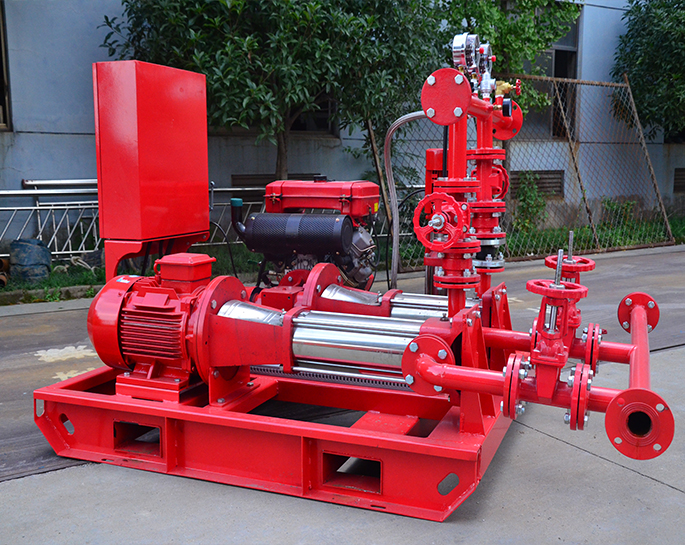Can firefighting pumps be used in conjunction with other fire suppression methods?
Apr 24, 2024
Share:
Yes, firefighting pumps can be used in conjunction with other fire suppression methods to enhance firefighting efforts and improve overall effectiveness. Here are some examples:
1. **Fire Hose Systems**: Firefighting pumps are commonly used to supply water to fire hose systems, including standpipes, fire hydrants, and hose reels. These systems allow firefighters to deliver water directly to the fire or to create a water curtain for containment.
2. **Sprinkler Systems**: Fire pumps can be integrated with automatic sprinkler systems to provide water for fire suppression in buildings. In the event of a fire, the pump activates to maintain water pressure and ensure adequate flow to the sprinkler heads, helping to control or extinguish the fire.
3. **Foam Systems**: Firefighting pumps can be used in combination with foam proportioning systems to generate foam for fire suppression. Foam can be more effective than water alone for extinguishing certain types of fires, such as those involving flammable liquids or combustible materials.
4. **Water Tanks and Reservoirs**: Fire pumps can be used to fill or replenish water tanks and reservoirs located near fire-prone areas. These stored water sources can supplement municipal water supplies and provide firefighters with a readily available water source for firefighting operations.
5. **Aerial Firefighting**: In wildland firefighting scenarios, firefighting pumps are often used in conjunction with aerial firefighting techniques, such as water-dropping helicopters or fixed-wing aircraft carrying water or fire retardant. The pumps can supply water from natural sources like lakes, rivers, or portable reservoirs to refill aircraft during firefighting missions.
6. **Portable Firefighting Equipment**: Firefighting pumps can power portable firefighting equipment such as fire hoses, nozzles, and foam applicators used in remote or inaccessible areas where traditional firefighting infrastructure may be limited or unavailable.
By combining firefighting pumps with other fire suppression methods, emergency responders can adapt to various fire scenarios and deploy resources more effectively to mitigate fire risks and protect lives and property.

1. **Fire Hose Systems**: Firefighting pumps are commonly used to supply water to fire hose systems, including standpipes, fire hydrants, and hose reels. These systems allow firefighters to deliver water directly to the fire or to create a water curtain for containment.
2. **Sprinkler Systems**: Fire pumps can be integrated with automatic sprinkler systems to provide water for fire suppression in buildings. In the event of a fire, the pump activates to maintain water pressure and ensure adequate flow to the sprinkler heads, helping to control or extinguish the fire.
3. **Foam Systems**: Firefighting pumps can be used in combination with foam proportioning systems to generate foam for fire suppression. Foam can be more effective than water alone for extinguishing certain types of fires, such as those involving flammable liquids or combustible materials.
4. **Water Tanks and Reservoirs**: Fire pumps can be used to fill or replenish water tanks and reservoirs located near fire-prone areas. These stored water sources can supplement municipal water supplies and provide firefighters with a readily available water source for firefighting operations.
5. **Aerial Firefighting**: In wildland firefighting scenarios, firefighting pumps are often used in conjunction with aerial firefighting techniques, such as water-dropping helicopters or fixed-wing aircraft carrying water or fire retardant. The pumps can supply water from natural sources like lakes, rivers, or portable reservoirs to refill aircraft during firefighting missions.
6. **Portable Firefighting Equipment**: Firefighting pumps can power portable firefighting equipment such as fire hoses, nozzles, and foam applicators used in remote or inaccessible areas where traditional firefighting infrastructure may be limited or unavailable.
By combining firefighting pumps with other fire suppression methods, emergency responders can adapt to various fire scenarios and deploy resources more effectively to mitigate fire risks and protect lives and property.


.png)
.png)

.png)


